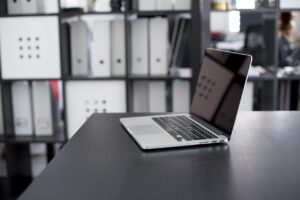Buying a MacBook is always a significant investment, even when you save money by choosing a refurbished model. While refurbished laptops often provide excellent value, they are not all created equal. Some are carefully restored and tested by professionals, while others may have gone through only minimal checks. That is why it is so important to know how to inspect a refurbished MacBook before committing to a purchase. A proper inspection ensures you are not only getting a fair deal but also a machine that will serve you reliably for years to come.
The first step is to verify the seller and warranty. Before you even look at the laptop itself, take time to research who you are buying from. Are they a certified refurbisher, a reputable store, or just an individual reselling their old computer? Trusted retailers usually offer at least a six- or twelve-month warranty on refurbished devices, while Apple’s Certified Refurbished program includes a one-year warranty and eligibility for AppleCare. If the seller does not provide any warranty or return policy, that should be a warning sign, because even the best refurbishers can miss something.
Next, check the serial number. Every MacBook has a unique serial number printed on the underside of the case and also available in the “About This Mac” menu. Enter this number on Apple’s official website to verify the exact model and year, whether it is still under Apple warranty, and if it has AppleCare coverage. This step ensures that you are buying the model being advertised and not something older or misrepresented.
After that, inspect the exterior of the laptop. Look carefully at the case, screen, keyboard, and trackpad. Check for dents, cracks, or warping in the casing, especially around the corners and hinges. Examine the screen for scratches, dead pixels, or uneven backlighting. Test every key on the keyboard to ensure responsiveness and watch out for sticky keys, particularly on the 2016–2019 models with butterfly keyboards. The trackpad should respond smoothly and accurately when clicking and swiping. Some cosmetic wear is expected on refurbished machines, but heavy damage could point to rough usage or internal issues.
The battery is one of the most important components to evaluate. Hold down the Option key and click the battery icon in the menu bar to view its condition status. You can also open System Information, go to Power, and check the cycle count. Apple rates most MacBooks for about 1,000 charge cycles, so a battery with fewer than 500 cycles generally still has plenty of life left. If the battery is near the end of its lifespan, you may want to negotiate the price or confirm whether the refurbisher has replaced it.
Next, test all ports and connectivity. Plug in a charger, connect a USB device, or hook up an external monitor to make sure every port works properly. Test Wi-Fi and Bluetooth, check the webcam and microphone, and ensure that audio plays clearly through the speakers. These are often overlooked during casual inspections, but faulty ports or weak connections can affect usability.
Performance testing is also essential. Spend time using the laptop for normal tasks such as opening multiple apps, streaming HD video, and browsing the web. This will help you spot lag, overheating, or fan noise. Test the speakers with music or video, and if you want to go deeper, run Apple Diagnostics by holding the D key during startup to detect potential hardware issues.
One crucial step is ensuring that Activation Lock has been disabled. This lock is part of Apple’s security system and ties a MacBook to an Apple ID. If it has not been removed, you will not be able to use the laptop. Always confirm that the device has been signed out of iCloud and that Find My Mac has been turned off.
Compare the device’s actual condition to the grading advertised by the seller. Many refurbishers label their products with grades such as Excellent, Good, or Fair. A laptop listed as Excellent should have minimal cosmetic flaws. If it shows heavy use, reconsider the purchase or ask for a discount. This is especially important with refurbished MacBooks, where sleek design is part of the appeal. Even if performance is intact, a machine with excessive scratches or dents may feel less valuable, particularly if you plan to resell it later.
Finally, review the accessories and packaging. While refurbished MacBooks may not come with the original box, they should at least include a compatible charger and cable. Confirm that the accessories are genuine or high-quality third-party replacements, since low-quality chargers can harm the battery or motherboard over time.
Inspecting a refurbished MacBook does not have to be intimidating, but it does require attention to detail. By verifying the seller, checking the serial number, examining cosmetics, testing the battery and ports, and confirming functionality, you can dramatically reduce the risk of buying a disappointing machine. The goal is to balance price with peace of mind. A carefully refurbished MacBook can save you hundreds of dollars compared to buying new while still delivering years of reliable performance. With the right inspection, you will walk away with a laptop that feels less like a compromise and more like a smart, confident investment.

